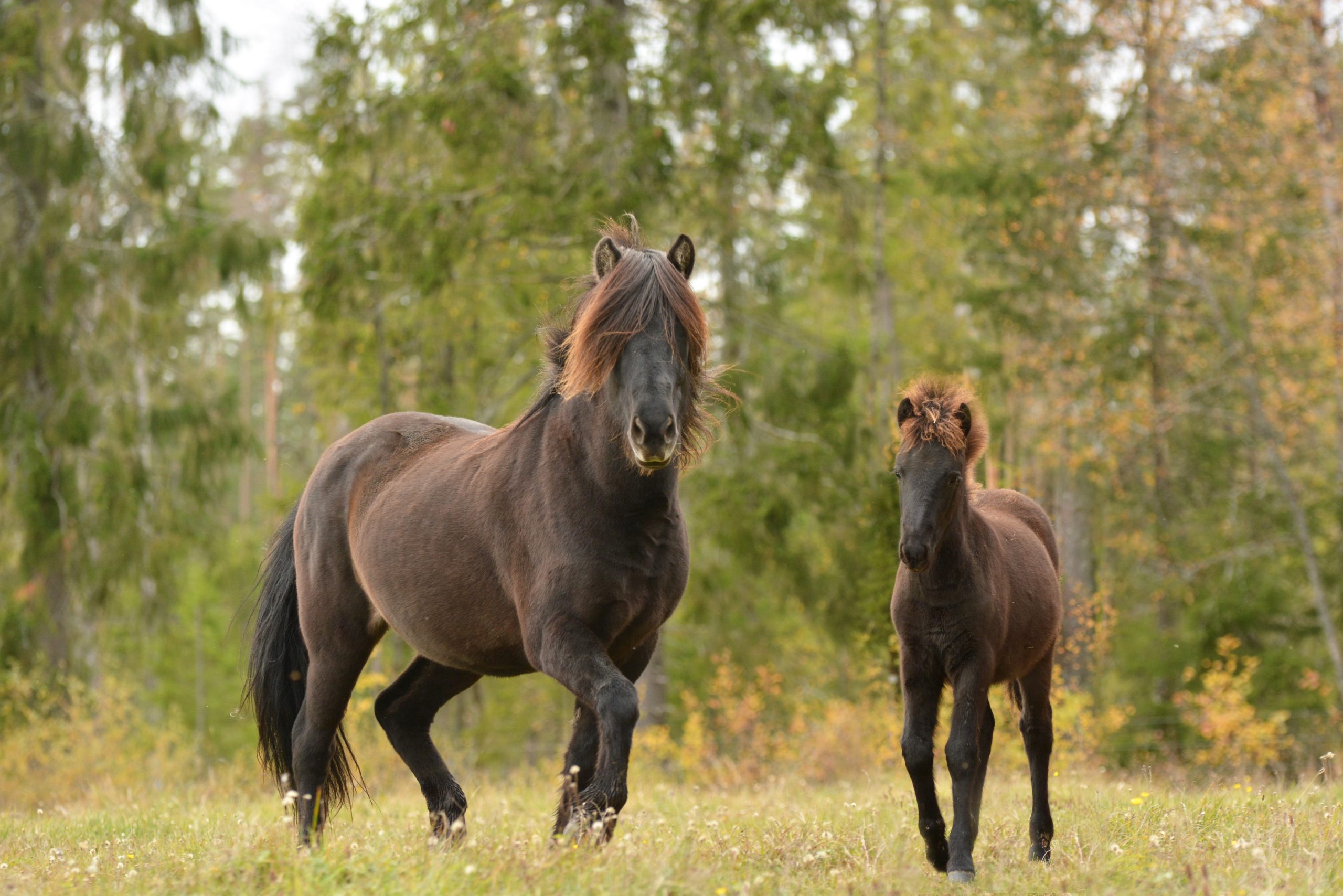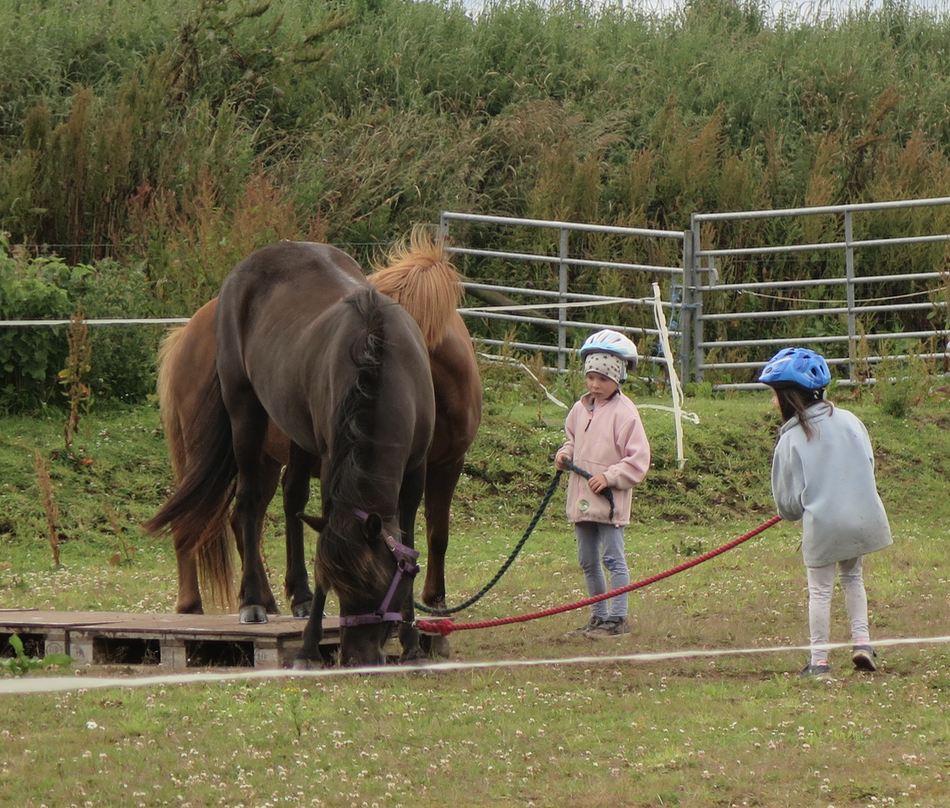FEIF aims to set the highest standards for breeding and riding pure Icelandic horses
The Icelandic horse
The Icelandic horse is a descendent of horses that were brought to Iceland during the settlement in the period of 874-930 and is one of the purest horse breeds in the world. They have been isolated on Iceland for more than 1000 years without any genetic input from other breeds.
Since the horse was so widely used for riding, good riding abilities, vigour and strength were particularly valued. As for the riding abilities, a willing horse with good speed capacity, length of stride and suppleness had been highly appreciated, as these were the desirable attributes for daylong travelling.
Nowadays, Icelandic horses can be found all over the world. More than 280,000 Icelandic horses around the world are registered in the WorldFengur database.

Video by Horses of Iceland
The gaits of the Icelandic horse
The Icelandic horse is a versatile riding horse that is used for leisure riding, travelling and in various competitions. The versatility of the Icelandic horse consists of, among other things, its five gaits. Its basic gaits are walk, trot, and canter. In addition, it is capable of tölt as well as pace. In riding and breeding the Icelandic horse, a heavy emphasis is put on the gaits, of which tölt and pace are considered the most desirable, although the versatility of the horse is highly valued as well. The emphasis on the gaits is clearly reflected in the various competitions for the Icelandic horse, which are in most cases gait competitions.
In addition, the Icelandic horse is a riding horse used both for short distance leisure riding as well as for travelling on longer journeys.
The main goal in regards to the gaits is to keep them pure and clearly distinguished. A pure gait has a correct beat, the horse moving freely without constraint or mistakes in an even rhythm. The gaits should moreover possess long, roomy strides and lightness and the movements of the horse should be high and supple.
The character of the Icelandic horse
The Icelandic horse is known for being a versatile, four- or five-gaited horse with an authentic and inviting character. The horses are friendly, adventurous, intelligent and quick to learn. They are in general very easy to handle, with a good temperament and great willingness to work.
The gaitedness of the Icelandic horse has been preserved through the centuries, and with an increase in leisure activities, the riding abilities of the Icelandic horse facilitated the development of a new tradition of leisure riding, sport competitions and travelling on horseback. This versatility is highly treasured and one of the most important breeding goals.


Photo: Zanna Hofvander
Breeding Icelandic horses
Our general breeding expectations for an Icelandic horse are to have a healthy, fertile , and durable riding horse, robust yet elegant and versatile with four or five excellent gaits. The conformation should offer optimal natural balance, and the movements should be supple, high, and ground covering in all gaits, giving an elegant and powerful image. As early as 1969 FEIF established the FEIF assessment system and breeding standard for Icelandic horses, in order to attain the breeding goals and to keep the breed pure.
It is very interesting to be a breeder of Icelandic horses today. Genetic research and statistical work correlating specific conformation traits with ridden performance provide us with more information, which can help breeders make informed mating decisions. The work on the international breeding standard as well as an assessment system is never complete.
Education and training
Within FEIF, education is organised at a national level. Each national association manages its own educational system for the learning of riding and horsemanship for Icelandic horses.
Training the trainers
The education of trainers and instructors is the responsibility of each member organisation. FEIF neither has the means nore the wish to enforce a unified education system. But how do you bring together educational matters at an international level?
FEIF has created a system, which allows the seamless recognition of qualifications and skills for instructors across all member nations, by using a list of competencies at various levels that is expected as a minimum standard. It is called: the Education Matrix.

Related news
New BLUP values – autumn 2025
New BLUP values have been stored in WorldFengur but the last breeding show of the season ended in the second week of September. Now the BLUP calculations are based on scores from breeding shows as well as competition results. Results from the following competition...
FEIF committee meetings 2025 in Frankfurt
The FEIF Committee meetings 2025 took place from October 17-18 in Frankfurt, Germany. The feedback from all committees was that the discussions were constructive, interesting, and fruitful. Below you will find a short summary of the discussions in the different...
Sport Judges’ Exam 2025
On October 4, 2025 the practical part of the Sport Judges‘ exam took place on Sundabakki Islandshästar, Laholm, Sweden. 13 candidates (two for the national and eleven for the international exam) participated in this very challenging event for which the Sundabakki team...
World Championships 2025
During the World Championships random doping tests were carried out among the sport and breeding horses according to FEI Equine Anti-Doping rules. The FEI approved laboratory LGC Ltd., Newmarket Road, Cambridgeshire, which tested the collected samples reported an...
Blood Farming Controversy in Iceland Draws Renewed Criticism
The controversial practice of "blood farming" in Iceland continues to face mounting criticism, as the licence for the main operator is set to expire later this year. Around 4,000 pregnant mares are kept solely for the extraction of blood used to produce PMSG — a...
WorldFengur Survey
Dear Friends of the Icelandic Horse, you may be aware of the fact that WorldFengur, the international database which holds details of all Icelandic horses worldwide, is undergoing a major development and re-design of the software. There you can find the pedigree of...
The Icelandic Horse World Says Goodbye to Ullu Becker
Ullu Becker was a true pioneer of Icelandic horse riding from its earliest days. Since the 1950s, she devoted herself with great passion to her beloved Icelandic horses. Together with her husband Claus Becker, and with the support of Ursula Bruns, she imported her...
Save the Date – FEIF YouthCup 2026 in Rieden GER
What is the FEIF YouthCup? The FEIF YouthCup (FYC) is a unique event that combines sport, education, and international friendship. Participants not only compete but also learn and build strong connections with riders from other countries. The event promotes team...
Advance Ticketsale has started for WC 2027 in Rieden GER
Experience the magic of the Icelandic Horse. From July 27 to August 01, witness thrilling competitons, captivating shows and a vibrant program set in the scenic heart of Bavaria. The world's best riders and horses compete in tölt, pace and more - at the highest level....







